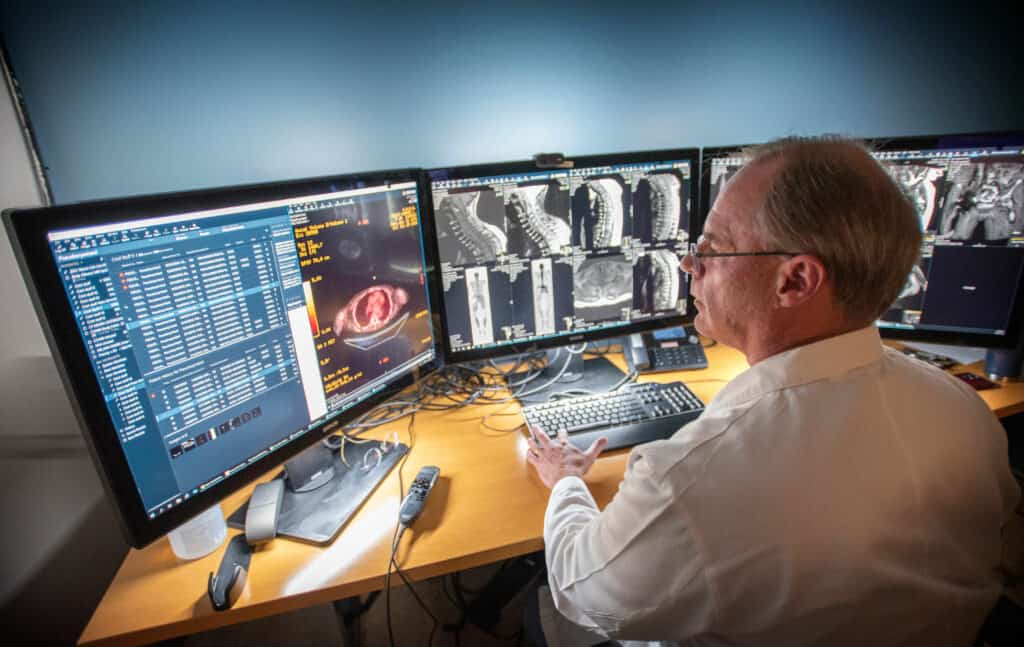Radiologists Work in Tandem with Myeloma Center Physicians and Staff

Multidisciplinary care is at the heart of the Myeloma Center’s treatment philosophy, and the radiology team plays a key role.
Imaging provided by Rudy L. Van Hemert, Jr., M.D., and his staff at initial diagnosis and with each follow-up examination are vital to the overall plan of the patient.
“Our commitment to that process is unchanged, and we are an integral part of the team throughout treatment,” said Van Hemert, an associate professor who is chief of neuroradiology. He completed his residency at the University of Arkansas for Medical Sciences (UAMS) in 1989, followed by a two-year fellowship and joined UAMS in 1995.
“This partnership has transformed patient care and made a marked impact on survival and quality of life for myeloma patients,” Van Hemert said.
In the infancy of the Myeloma Center’s program, Van Hemert and his colleagues studied a more limited portion of the body. Now, the imaging includes the entire body. The Department of Radiology also assists in lesion biopsies, vertebroplasties and long-term catheter placement. PET-CT is also used to identify and follow myeloma’s lesions.
Van Hemert’s department runs scans from 6 a.m. to 11 p.m., on weekdays, and from 7 a.m. to 7 p.m. on weekends. For in-patient care, magnetic imaging operates 24 hours a day.
“One of the big ways we’ve helped is by running full-body scans that can show from the top of the head to the bottom of the toes,” said. “We do thousands of MRIs a year, and we have more experience with imaging than anywhere else in the world.”
For Van Hemert, the most rewarding part of his work with the Myeloma Center is his involvement with patient care. While the radiologists typically don’t see the patients, they work behind the scene to identify new problems and help guide treatment for patients, both for cancer and non-cancerous issues.
“Radiology in myeloma treatment has progressed from research to essential standard of care,” he said.
However, treatment varies from patient to patient because myeloma is a disease with many variations.
“Sometimes, focal lesions are different within the patient,” Van Hemert said. “We call myeloma one disease, but there are many subtypes of it,” he said, adding that those subtypes change as the disease progresses. Providers then match the current treatment regimen with the specific subtypes to get the most effective, least toxic regimen.
It is crucial to identify the exact disease you have before treatment begins, Van Hemert said. “You need to know what you’re treating, so you can use what works best to kill it.”
While he focuses on helping current patients, he realizes that the work he and his colleagues are doing will also help others in the future.
“It’s been fascinating to see these things we used to do as research now being used as treatment,” Van Hemert said. “Other myeloma programs also benefit from the work the UAMS Myeloma Center is doing.”
